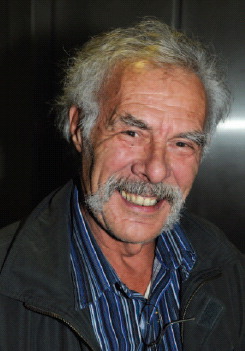Serge Pujol passed away on May 1, 2018 at the age of 74. He was the father of the Orange cryostat and an uncontested expert in cryogenics at the Institut Laue-Langevin (ILL). For many colleagues, friends and users worldwide, Serge was a legend. He started working at the age of 14 with a locksmith diploma. He also learned the skills of a metalworker because he wanted to know how to draw objects in three-dimensional space using projective geometry.
In the late 1960s, he was working for Air Liquide in Sassenage, near Grenoble, when he met the first ILL cryogenics technician, Gabriel Prati. Impressed by Serge's manual skills, Gabriel pushed him to participate in the construction of the ILL. Serge accepted and almost lost an eye when he was soldering pipes for the reactor cooling circuit. In the early 1970s, he started working on the ILL cryogenics team led by Dominique Brochier.
At the time, the ILL was starting the user programme and physicists needed cryostats for cooling their samples. In a few years, Dominique acquired 35 cryostats from different companies but faced many complaints from users: the helium and nitrogen did not last long enough, and the sample temperature could not be reliably stabilized.
Therefore in 1975, Serge and Dominique decided to design and build a new type of cryostat that was later called the Orange cryostat. This name comes from the color of the only paint that was available at the lab and was used to protect the first cryostat. They invented the Variable Temperature Insert (VTI), which was thermally decoupled from the liquid cryogens and driven with a heat exchanger and a cold valve.
They were so successful that they started building Orange cryostats with the help of the British company, AS Scientific Products Ltd., which allowed any facility to acquire them. In 1983, they invented the Cryofurnace in answer to the demand of chemists who wanted to work below and above room temperature. Physicists then required temperatures lower than 1.5 K and Serge built 3He-4He dilution inserts with Charlie Neumaier and Jean-Louis Ragazzoni, and then a dilution cryostat with Alain Benoît of the CNRS.
In order to access the full reciprocal space, Serge built a 4-circle helium-flow cryostat in 1987, followed by a dilution cryostat insensitive to gravity with Benoît in 1991. In parallel, he also designed and built the Cryoflipper and the first Cryopad, helping Francis Tasset to develop the Spherical Neutron Polarimetry technique.
In the following years, during the long shutdown of the ILL, Serge worked at the CNRS and contributed to the successful development of dilution refrigerators for space applications. In 1994, he came back to the ILL as Leader of the Sample Environment team. Among many projects, he developed dry cryostats, a superconducting cavity for hosting 3He spin filter cells in large stray fields (Cryopol), two new generations of Cryopad, and, to improve their performance, he re-built the VTIs of a few cryomagnets and the superconducting arms of the triple-axes spin-echo.
Serge was an uncontested expert in cryogenics with an unsurpassed sense of service. Every evening, he used to visit the instruments and check whether cryostats, magnets, and dilution refrigerators were operating smoothly.
Always humble, Serge was delighted to share his know-how with his colleagues and friends. Before his retirement in 2006, he took the time to teach a new generation that now supports users with great success. Serge will be greatly missed by his colleagues and friends.

